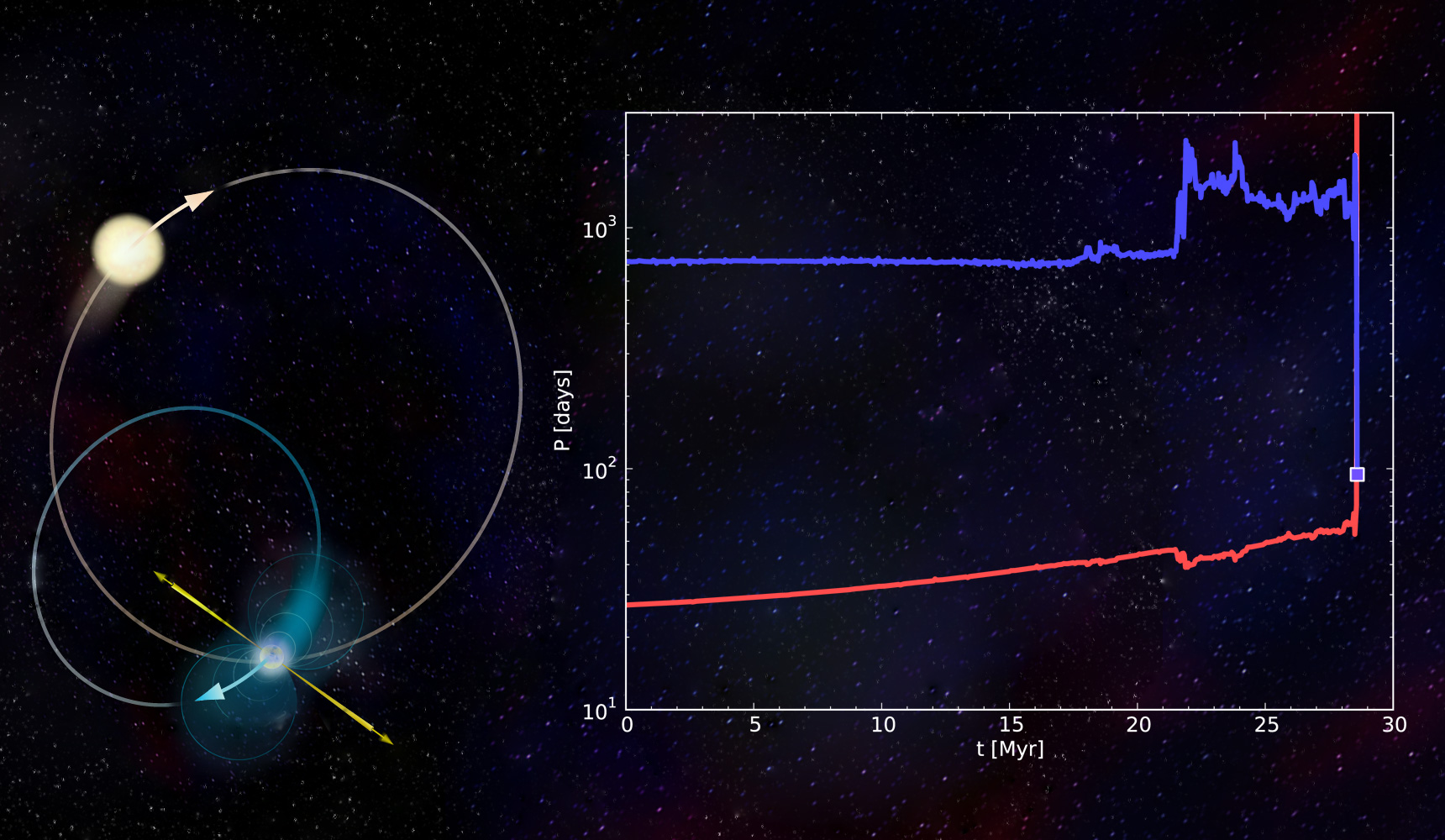Daily Image
25-03-2011The formation of the eccentric-orbit millisecond pulsar J1903+0327 and the origin of single millisecond pulsars
| Submitter: | Joeri van Leeuwen |
| Description: | The millisecond pulsar J1903+0327, discovered in 2008 by an international team including Jason Hessels and Joeri van Leeuwen, is accompanied by an ordinary G-dwarf star in an unusually wide (95-day) and eccentric (e=0.44) orbit. The standard model for producing millisecond pulsars (MSPs) fails to explain the orbital characteristics of this extraordinary binary, and alternative binary models are unable to explain the observables. In a paper accepted for ApJ and now available at arxiv:1103.2375, a team including Joeri van Leeuwen now present a triple-star model for producing MSPs in relatively wide eccentric binaries with a normal (main-sequence) stellar companion. In this model, a stable triple system consisting of a Low-Mass X-ray Binary (LMXB) with an orbital period of at least 1 day, is accompanied by a G-dwarf in a wide and possibly eccentric orbit. Variations in the initial conditions naturally provide a satisfactory explanation for the unexplained triple component in the eclipsing soft X-ray transient 4U~2129+47 or the cataclysmic variable EC 19314-5915. The best explanation for J1903, however, results from the expansion of the orbit of the LMXB, driven by the mass transfer from the evolving donor star to its neutron star companion, which causes the triple eventually to becomes dynamically unstable. Using numerical computations that ran on the DROP cluster at ASTRON, the team shows that, depending on the precise system configuration at the moment the triple becomes dynamically unstable, the ejection of any of the three components is possible. If the donor star of the LMXB is ejected, a system resembling J1903 will result. If the neutron star is ejected, a single MSP is formed. This model therefore also provides a straightforward mechanism for forming single MSPs in the Galactic disk. We conclude that the Galaxy contains some 30--300 binaries with characteristics similar to J1903, and about an order of magnitude fewer single millisecond pulsars produced with the proposed triple scenario. Figure: the evolution of the orbital period of a rather typical case which evolves to a system very similar to J1903 + 0327. The square represents the final orbit of this simulation, which in this particular case resulted in a binary consisting of a 1.73 solar mass MSP and a 1.0 solar mass companion in a ~100 day orbit with e=0.43, a very close match to J1903. The bottom line (red) indicates, as a function of time the evolution of the inner LMXB, whereas the top line (blue) represents the evolution of the outer orbit. |
| Copyright: | JVL |
| Tweet |  |
